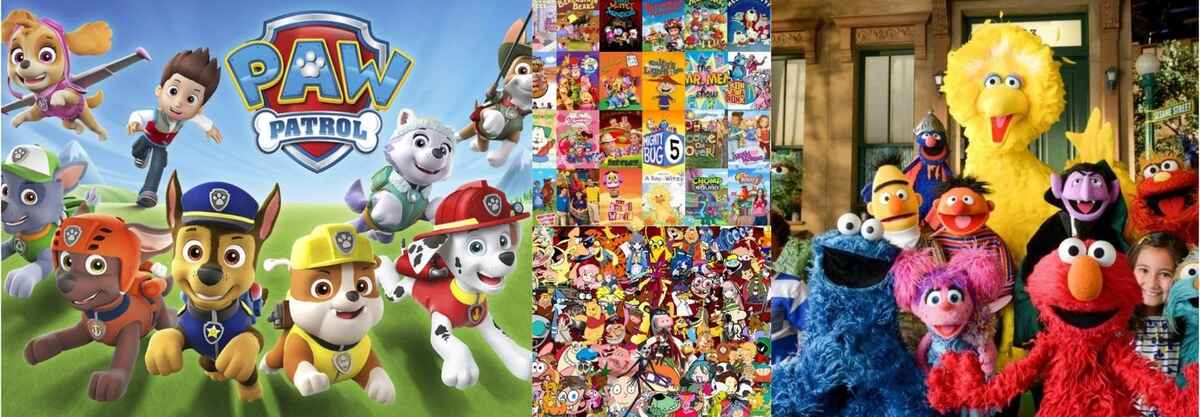Children’s Television Series News are a cornerstone of entertainment and education for young audiences worldwide. These shows, explicitly designed for children, span various themes and styles, each tailored to different age groups and demographics. Here’s a comprehensive look at the diverse landscape of children’s television:
History of Children’s Television Series News
Children’s television has roots dating back to the early days of broadcasting. In the United Kingdom, BBC’s “For the Children,” starting in 1946, is credited as one of the first dedicated programs for young audiences. Radio shows like BBC’s “Children’s Hour” paved the way, transitioning to television with educational intentions.
In the United States, radio’s influence on early TV can be seen with shows like “Little Orphan Annie” in the 1930s. The medium evolved with pioneering TV shows such as “Kukla, Fran and Ollie” and “Howdy Doody,” setting the stage for modern children’s programming.
Evolution of Style in the US and Beyond
Early children’s shows were diverse in style and approach. “Ding Dong School” introduced an interactive format, while “Winky Dink and You” experimented with viewer participation through screen drawings. Modern classics like “Sesame Street,” “The Electric Company,” and “Mister Rogers’ Neighborhood” continued this tradition with innovative educational content.
Notable Successes Outside the US
Internationally, children’s programming thrives with iconic shows like the UK’s “Teletubbies,” “Thomas & Friends,” and “Danger Mouse.” Canada’s Nelvana Studio has significantly contributed to global Children’s Television Series with widely broadcast series.
Role of Advertising
Early children’s TV often intertwined with commercial interests, using shows as platforms for product marketing. Regulations evolved, restricting advertising aimed at young audiences. Shows like “Sesame Street” pioneered commercial-free educational TV in the US.
Saturday Morning Cartoon Blocks
In the US, Saturday mornings were once dominated by cartoon blocks from major networks. This tradition shifted in the 1990s with the rise of teen programming and cable alternatives, marking the end of traditional network cartoon blocks.
Demographics
Children’s TV targets specific age groups, from preschoolers with educational content like “Hey Duggee” to older children with shows like “Power Rangers.” Teen-focused programming offers dramatic and mature themes, often diverging from academic content.
Under-represented Groups
In recent years, efforts to diversify children’s programming have gained traction. Advocacy groups have pushed for more inclusive representation, addressing issues like LGBT+ visibility. Shows now increasingly feature diverse characters and storylines, reflecting broader societal changes.
Channels
Major US networks like Nickelodeon, Cartoon Network, and Disney Channel dominate children’s programming, offering a range of content from preschool to teen-oriented shows. Each network has expanded its reach through digital channels and streaming platforms.
International Perspectives
Canada’s Corus Entertainment and WildBrain lead in English-language children’s channels, while the UK’s BBC and ITV offer dedicated services like CBBC and CITV. Each country’s programming reflects cultural and linguistic diversity, with localized content and international exports.
Current Trends and Popular Shows
In recent years, Children’s Television Series News have continued to evolve, adapting to new technologies and audience preferences. The landscape is rich with diverse shows that cater to various age groups and interests, from educational programs to thrilling adventures and imaginative storytelling. Let’s explore some of the notable trends and popular shows that define children’s television today:
Diversity and Representation
One of the most significant developments in contemporary children’s programming is the emphasis on diversity and representation. Shows like “Steven Universe” and “She-Ra and the Princesses of Power” have gained acclaim for their inclusive approach, featuring characters from diverse backgrounds and addressing themes of identity and acceptance. This trend returns a growing awareness of the importance of positive representation for young viewers.
Educational Innovation
Educational content remains a cornerstone of children’s television, but modern shows have innovated with interactive formats and engaging storytelling. Programs like “The Magic School Bus Rides Again” and “Ada Twist, Scientist” impart knowledge and encourage young audiences’ curiosity and critical thinking. These shows leverage animation and computer-generated imagery to make learning fun and accessible.
Streaming Platforms and On-Demand Viewing
The rise of streaming plans has changed how children access and engage with television content. Platforms like Netflix, Disney+, and Amazon Prime Video offer a vast library of children’s shows, allowing families to watch their favorite programs anytime, anywhere. This shift towards on-demand viewing has also influenced the production of primary content tailored to diverse global audiences.
Interactive Experiences
Incorporating interactive elements into children’s programming has become increasingly popular. Shows such as “Trollhunters: Tales of Arcadia” and “Adventure Time” invite viewers to participate in the narrative through choices or puzzles, enhancing engagement and immersion. This interactive approach entertains and empowers young viewers to shape the story actively.
Cross-Media Franchises
Many successful Children’s Television Series News have expanded into cross-media franchises, encompassing merchandise, video games, and live events. Franchises like “My Little Pony: Friendship Is Magic” and “PJ Masks” leverage their television success to create immersive experiences that enlarge beyond the screen, fostering deeper connections with their fan base.
Environmental and Social Themes
In recent years, there has been a rise in children’s shows that address pressing environmental and social issues. Programs like “The Dragon Prince” and “The Bureau of Magical Things” weave themes of sustainability, empathy, and social justice into their narratives, encouraging young viewers to reflect on the world around them and consider their impact.
Digital Literacy and Safety
With digital literacy becoming increasingly important, some children’s shows incorporate online safety and responsible technology use themes. Shows like Cyberchase and Arthur explore topics such as cybersecurity, digital citizenship, and the ethical use of technology, equipping young viewers with essential skills for navigating the digital landscape.
Emerging Trends in Children’s Television
Virtual Reality and Augmented Reality
As technology advances, virtual reality (VR) and augmented reality (AR) are increasingly integrated into children’s television. Shows are exploring immersive storytelling where viewers can experience adventures in virtual worlds or interact with augmented characters in their environments. This trend enhances engagement and opens new possibilities for interactive learning and creativity.
Global Perspectives and Cultural Exploration
Children’s television embraces global perspectives and cultural diversity as the world becomes more interconnected. Shows like Elena of Avalor and Mira Royal Detective introduce young viewers to different cultures, traditions, and languages, promoting understanding and appreciation of diversity. This trend reflects a growing grasp of the import of global citizenship and empathy.
Mental Health and Well-being
Addressing mental health and emotional well-being is gaining prominence in children’s programming. Shows such as “Inside Out” and “Daniel Tiger’s Neighborhood” incorporate themes of emotions, empathy, and coping strategies, helping young viewers develop emotional intelligence and resilience. These programs aim to support children’s mental health by providing tools for navigating complex feelings and situations.
Gender Equality and Empowerment
Children’s television is increasingly challenging traditional gender norms and promoting gender equality and empowerment. Shows like “Doc McStuffins” and “The Owl House” feature strong female protagonists who defy stereotypes and pursue their passions. This trend encourages girls to aspire to diverse roles and promotes inclusivity and respect for gender diversity among all viewers.
Sustainability and Environmental Responsibility
Children’s television incorporates themes of sustainability and ecological responsibility as awareness of environmental issues grows. Programs like “Octonauts” and “Bluey” teach young viewers about wildlife conservation, recycling, and protecting the planet. These shows inspire a sense of stewardship and authorize children to make positive changes in their communities and beyond.
Inclusivity and Representation
Continued efforts are being made to ensure inclusivity and representation in children’s television. Shows feature characters with disabilities, LGBTQ+ identities, and diverse family structures to reflect the real-world diversity of their audiences. This commitment to inclusivity fosters empathy, understanding, and a sense of belonging among all viewers.
Interactive Educational Platforms
Beyond traditional television, interactive educational platforms are becoming famous for children’s learning and entertainment. Apps, websites, and interactive shows like “PBS Kids Games” and “Sesame Street Interactive” offer engaging activities that playfully reinforce educational concepts. These platforms combine the appeal of digital interactivity with the educational goals of children’s programming.
Conclusion
From classic favorites to innovative new series, children’s television continues to evolve, reflecting changing societal values and technological advancements. Whether through educational programming, diverse representation, interactive storytelling, or cross-media experiences, these shows play a crucial role in shaping the imaginations and values of young audiences worldwide. As we look to the future, the landscape of children’s television promises continued innovation and creativity, ensuring every child can find stories that inspire, educate, and entertain.








